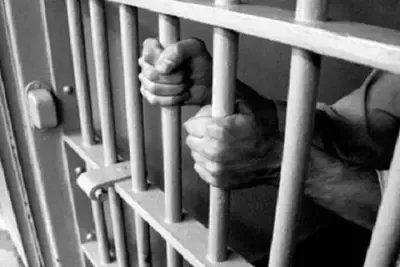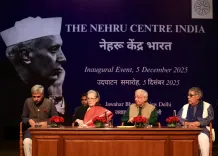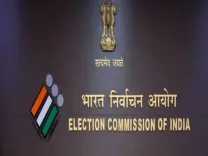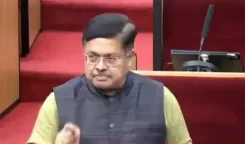Do SC and ST Undertrials Comprise 30% of India's Prison Population?

Synopsis
Key Takeaways
- SCs and STs represent 30% of undertrial population.
- Uttar Pradesh has the highest SC undertrial count.
- Madhya Pradesh leads in ST undertrials.
- North-East states show extreme over-representation.
- Legal reforms are necessary for equitable justice.
New Delhi, Aug 19 (NationPress) Approximately one-third of the undertrial population in India’s prisons consists of Scheduled Caste (SC) and Scheduled Tribe (ST) individuals, as revealed by data presented in the Lok Sabha on Tuesday.
As of December 31, 2022, there were 4.34 lakh undertrials in the country, with 90,951 (20.94 percent) being SCs and 40,221 (9.26 percent) being STs, according to Minister of Home for State Affairs Bandi Sanjay Kumar.
Uttar Pradesh had the highest number of SC undertrials, totaling 24,693 (26.23 percent), followed by Bihar with 11,826 (20.55 percent) and Punjab with 8,306 (34.33 percent).
Among ST undertrials, Madhya Pradesh led with 5,706 (21.23 percent), Uttar Pradesh with 5,209 (5.53 percent), Chhattisgarh with 4,044 (31.54 percent), and Jharkhand with 4,056 (27.43 percent).
The disproportionate representation of these communities is particularly evident in the North-East, with Mizoram recording 96.19 percent of undertrials as STs, followed by Nagaland at 70.86 percent, Meghalaya at 76.12 percent, and Lakshadweep at a staggering 100 percent.
Arunachal Pradesh also reported 66.30 percent of its undertrials as STs. As for SCs, states like Tamil Nadu (30.72 percent), Odisha (30.56 percent), Chandigarh (30.17 percent), and Himachal Pradesh (29.18 percent) showed a significant presence in prisons, far exceeding their population share.
Out of the 44,862 SC/ST convicts nationwide, SCs made up 26,952 and STs 17,910. Again, Uttar Pradesh topped the list with 5,943 SC convicts, while Madhya Pradesh had the highest number of ST convicts at 4,910.
Other states like Chhattisgarh (2,542), Jharkhand (1,633), and Odisha (1,011) also reported significant ST convict populations.
The Ministry of Home Affairs has noted that while prison management falls under state jurisdiction, efforts are underway to tackle prolonged pre-trial detentions. State Legal Services Authorities have established legal service clinics within jails, and the National Legal Services Authority (NALSA) conducts awareness campaigns focused on bail, plea bargaining, and Lok Adalats.
Additionally, videoconferencing between courts and jails is being utilized to expedite trials. However, Maharashtra did not furnish caste-wise data regarding its prisoners.
This data underscores the significant over-representation of SCs and STs in the prison system, especially among undertrials, highlighting deep-rooted structural issues in policing, investigation, and access to legal remedies.










